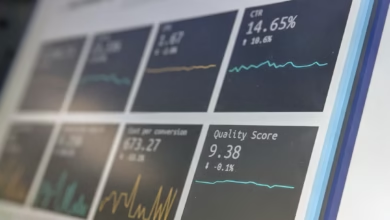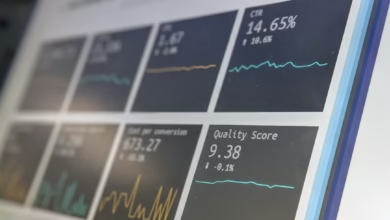Commodities Trading 101: Mastering Key Concepts, Strategies, and Risk Management Techniques

Commodities trading has emerged as a dynamic and lucrative component of the financial markets, drawing interest from both seasoned investors and newcomers alike. This trading practice involves the buying and selling of raw materials, such as gold, silver, oil, and agricultural products, which serve as the backbone of the global economy. Unlike stock trading or forex trading, commodities trading requires a unique understanding of market dynamics, pricing influences, and the intricate interplay of supply and demand.
In this article, we will delve into the essential aspects of commodities trading, starting with key concepts, strategies, and market analysis techniques that form the foundation of successful trading. We will explore the roles of technical and fundamental analysis, which are critical for making informed decisions in a market that can be as volatile as it is rewarding. Additionally, we will discuss vital risk management techniques applicable to various trading styles, from day trading and swing trading to futures trading and options trading. By understanding these elements, traders can navigate the complexities of commodities trading and enhance their ability to achieve profitable outcomes in this exciting sector.
- 1. Understanding Commodities Trading: Key Concepts, Strategies, and Market Analysis
- 2. The Role of Technical and Fundamental Analysis in Commodities Trading
- 3. Risk Management Techniques for Successful Commodities Trading: From Day Trading to Futures Trading
1. Understanding Commodities Trading: Key Concepts, Strategies, and Market Analysis
Commodities trading involves the buying and selling of raw materials, such as gold, silver, oil, and agricultural products, on various online trading platforms. Understanding the key concepts in commodities trading is essential for both novice and experienced traders alike. This market operates on principles similar to stock trading, forex trading, and even crypto trading, but it has its unique characteristics and strategies.
One of the fundamental aspects of commodities trading is the distinction between spot and derivatives trading. Spot trading involves the immediate exchange of commodities, while derivatives trading encompasses futures trading and options trading, where contracts are traded based on the future price of the commodity. This allows for leveraging and margin trading, enabling traders to control larger positions with a smaller amount of capital.
Market analysis is crucial in commodities trading and can be divided into two primary approaches: technical analysis and fundamental analysis. Technical analysis involves studying price movements and trading volumes to identify patterns and trends, often utilizing indicators and charting techniques. In contrast, fundamental analysis focuses on the underlying factors that influence commodity prices, such as supply and demand dynamics, geopolitical events, and economic data.
Several trading strategies can be applied to commodities trading, including day trading, swing trading, and scalping. Day trading entails opening and closing trades within the same day, while swing trading aims to capitalize on short- to medium-term price movements. Scalping is a high-frequency trading strategy that seeks to make small profits from numerous trades throughout the day.
Risk management is a critical component of successful commodities trading. Traders must be aware of the inherent volatility in commodity markets and employ strategies to protect their capital. This may include setting stop-loss orders, utilizing leverage cautiously, and diversifying their portfolios to mitigate risks.
Furthermore, trading psychology plays a vital role in commodities trading. Traders must maintain discipline and control emotions, particularly during periods of market volatility. Developing a well-defined trading strategy and adhering to it can help traders navigate the psychological challenges associated with trading.
In summary, understanding commodities trading requires a grasp of key concepts, effective trading strategies, and robust market analysis. Whether engaging in energy trading, arbitrage trading, or using CFD trading and ETF trading to gain exposure, traders must stay informed and adaptable to succeed in this dynamic market.
2. The Role of Technical and Fundamental Analysis in Commodities Trading
In the fast-paced world of commodities trading, understanding the dynamics of the market is crucial for success. Traders often employ two primary methods of analysis: technical analysis and fundamental analysis. Each approach plays a vital role in shaping trading strategies and making informed decisions.
Technical analysis involves examining historical price patterns and market trends to predict future price movements. Traders use various tools and indicators, such as moving averages, Relative Strength Index (RSI), and candlestick patterns, to identify potential entry and exit points. This approach is particularly popular among day traders and swing traders, who rely on short-term fluctuations in commodities like gold, silver, and crude oil to capitalize on profit opportunities. Technical analysis is also a staple in algorithmic trading and high-frequency trading, where algorithms analyze vast amounts of data to execute trades at lightning speed.
On the other hand, fundamental analysis focuses on the underlying factors that influence commodity prices. This includes evaluating supply and demand dynamics, geopolitical events, economic indicators, and seasonal trends. For instance, a trader engaged in energy trading might analyze reports on oil production levels, OPEC decisions, or changes in global energy consumption. By understanding these fundamentals, traders can better anticipate market movements and adjust their trading strategies accordingly. Fundamental analysis is essential for long-term investors and those involved in futures trading, as it helps gauge the intrinsic value of commodities.
Combining both technical and fundamental analysis can enhance trading strategies, allowing traders to manage risk effectively. For instance, while a technical chart may signal a buying opportunity, fundamental insights could provide context that reinforces or challenges that signal. Incorporating elements of trading psychology is also crucial; traders must remain disciplined and avoid emotional decision-making, especially when leveraging margin trading or engaging in derivatives trading.
In summary, both technical and fundamental analysis are integral to commodities trading. By employing these methods, traders can develop robust trading strategies, improve risk management, and enhance their overall market analysis. Whether one is involved in options trading, CFD trading, or even crypto trading, a solid understanding of these analytical approaches can lead to more informed and profitable trading decisions.
3. Risk Management Techniques for Successful Commodities Trading: From Day Trading to Futures Trading
Successful commodities trading requires a comprehensive approach to risk management. Given the volatility of raw materials like gold, silver, oil, and agricultural products, traders must implement effective techniques to safeguard their investments. Here are several risk management strategies that can enhance your trading experience, whether you are involved in day trading, futures trading, or any other form of trading.
1. **Diversification of Portfolios**: Just like in stock trading or forex trading, spreading investments across various commodities can reduce risk. By not putting all your capital into a single commodity, you can mitigate potential losses from any one market downturn. This is similar to index trading, where a range of stocks is included in a single investment.
2. **Utilizing Stop-Loss Orders**: Implementing stop-loss orders is crucial for managing risk in commodities trading. These orders automatically sell your position when a commodity reaches a predetermined price, limiting potential losses. This technique is widely used in day trading and swing trading, allowing traders to adhere to their trading strategies without emotional interference.
3. **Understanding Leverage and Margin**: Leverage trading can amplify gains, but it also increases the risk of significant losses. Traders must be cautious with margin trading, ensuring that they do not overextend themselves. Familiarizing yourself with the terms of leverage and margin can prevent devastating financial consequences, especially in high-frequency trading scenarios where quick decisions are necessary.
4. **Technical and Fundamental Analysis**: Employing technical analysis helps traders identify market trends and potential entry and exit points. Similarly, fundamental analysis assesses the economic factors that influence commodity prices. Combining both analysis methods can lead to informed trading decisions, enhancing your overall trading strategies in commodities and derivatives trading.
5. **Trading Psychology**: Understanding trading psychology is essential for maintaining discipline and making objective decisions. Fear and greed can lead to impulsive decisions, particularly in volatile markets like energy trading or crypto trading. Developing a trading plan and sticking to it, regardless of market fluctuations, can significantly improve outcomes.
6. **Using Online Trading Platforms**: Many online trading platforms offer tools and features specifically designed for risk management. These may include real-time market analysis, risk assessment calculators, and automated trading strategies. Familiarizing yourself with these tools can enhance your ability to manage risks effectively.
7. **Regular Market Analysis**: Continuous market analysis is vital in commodities trading. Staying updated on global economic conditions, supply and demand dynamics, and geopolitical events can inform your trading decisions. This ongoing evaluation is critical for developing robust trading strategies across various trading modalities, including options trading and CFD trading.
In conclusion, effective risk management in commodities trading is multifaceted and requires a blend of strategies tailored to individual trading styles. By implementing these techniques, traders can navigate the complexities of commodities markets with greater confidence and success.
In conclusion, commodities trading presents a unique opportunity for investors looking to diversify their portfolios and engage in various trading strategies. By understanding the key concepts and employing both technical and fundamental analysis, traders can better navigate the complexities of this market. Effective risk management techniques are crucial, whether you are involved in day trading, futures trading, or exploring options trading and derivatives trading.
As the landscape of trading evolves, integrating advanced methods such as algorithmic trading and high-frequency trading can enhance your approach to commodities trading. Furthermore, leveraging online trading platforms and engaging in social trading or copy trading can provide valuable insights and support. Remember, the psychological aspects of trading also play a significant role in your success, emphasizing the importance of a solid trading plan.
By staying informed about market trends and employing a disciplined strategy, you can maximize your potential in commodities trading, whether your focus is on energy trading, agricultural products, or precious metals like gold and silver. Embrace the challenges and opportunities this dynamic market offers, and continue to refine your trading skills for long-term success.
References:
– Investopedia. (2023). Commodities Trading: An Introduction. [https://www.investopedia.com/terms/c/commodities-trading.asp](https://www.investopedia.com/terms/c/commodities-trading.asp)
– CME Group. (2023). Understanding Futures Trading. [https://www.cmegroup.com/education/courses/understanding-futures-trading.html](https://www.cmegroup.com/education/courses/understanding-futures-trading.html)
– CFA Institute. (2023). Risk Management in Trading. [https://www.cfainstitute.org/en/research/alternative-investments/risk-management-in-trading](https://www.cfainstitute.org/en/research/alternative-investments/risk-management-in-trading)





